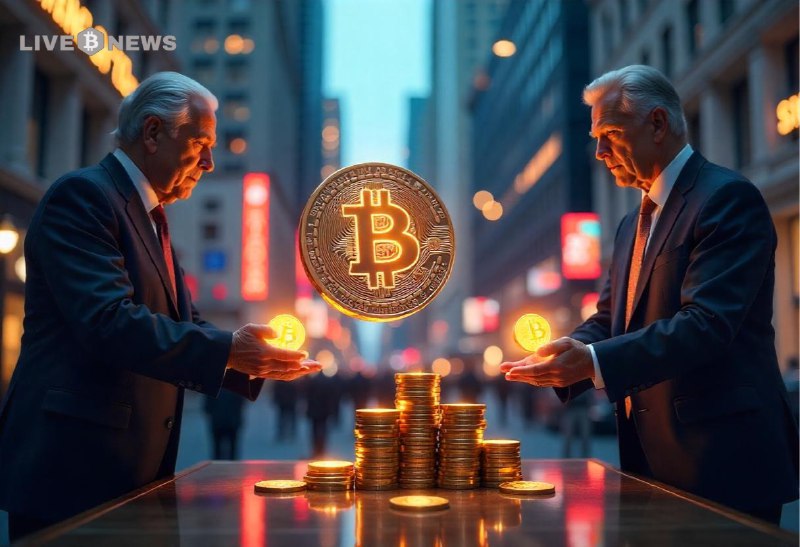Key Insights:
- Bitcoin’s current price stagnation above $100,000 could be because long-term holders are selling their positions to institutional investors.
- This “quiet transfer of wealth” is not necessarily bearish as new buyers are absorbing the supply. A rally is incoming.
- Despite billions flowing into spot Bitcoin ETFs, the price isn’t soaring because institutions mostly use over-the-counter (OTC) desks for large purchases.
Bullish headlines have dominated the internet for Bitcoin over the last few weeks. However, despite this positive trend, the cryptocurrency remains stuck just above $100,000 and underneath $112,000.
This crab walk has been frustrating for many retail investors and analysts, especially at a time when institutional FOMO appears to be ramping up. However, according to Charles Edwards, founder of Capriole Investments, the reason why Bitcoin is behaving this way may be a simple one.
Long-time Bitcoin holders (or the “OGs”) have been offloading their positions. They have been dumping their assets onto Wall Street’s eager hands. Here’s a look at what’s been happening and why the price has been sluggish despite this strong demand.
Why Bitcoin’s Price Has Flatlined Above $100,000
Charles Edwards put it bluntly: “People are wondering why Bitcoin has been stuck at $100K so long, despite the institutional FOMO. It’s because OGs have been dumping on Wall Street since the ETF launch in January 2024.”
Bitcoin’s price first broke above six figures earlier this year. However, it hasn’t done much else since then.
People are wondering why BTC has been stuck at $100K so long, despite the institutional FOMO. Despite what X news might suggest, it's because Bitcoin OGs (long-term holders) have been dumping on Wall St since the ETF Launch in January 2024, unloading their positions.
In April… pic.twitter.com/0qYOiX2vqE
— Charles Edwards (@caprioleio) June 29, 2025
Instead, it is now trading in a range, mostly between $102,000 and $110,000 with short-lived spikes that quickly fade.
According to Edwards, this consolidation is happening because of a quiet transfer of wealth. Long-term holders who accumulated Bitcoin early are using this new wave of institutional demand as an exit opportunity.
Bitcoin OGs Out, Institutions In
While it may seem strange at first, this sell-off from OG whales isn’t necessarily bearish.
According to blockchain data, while older coins are moving out of cold wallets, a new class of buyers is stepping in. These buyers are mostly corporate treasuries and institutional players. Think of them as companies adding Bitcoin to their balance sheets: Not for short-term speculation, but for long-term strategy.
According to Edwards, the group of holders who have kept their Bitcoin for six months or longer has surged.
In just two months, this cohort has absorbed nearly all the BTC unloaded by long-term holders over the last 18 months. “We’ve clearly entered the heat of the Bitcoin treasury trend,” Edwards said. “Many copycats have entered the market.”
Some interesting Wall Street investors scooping up all this Bitcoin include Cardone Capital, ProCap (Anthony Pompliano’s venture firm), mineral exploration firm Panther Metals and Norwegian deep-sea mining company Green Minerals.
This diversity of companies jumping into the Bitcoin market, shows that Bitcoin is looking more and more attractive as a reserve asset.
What About ETFs?
The question now is: If billions of dollars are flowing into Bitcoin spot ETFs, why isn’t the price going parabolic? According to on-chain analyst TXMC, the answer could be in how Bitcoin itself trades.
I think Bitcoin people grossly underestimate how little of the supply is actually setting the price every hour, versus how much transacts away from the order books. The bitcoin market is a bunch of siloed exchanges which try to maintain price parity via cross-exchange market… https://t.co/vPsxDEbpLo pic.twitter.com/WBNEfR9RCv
— 𝐓𝐗𝐌𝐂 (@TXMCtrades) June 29, 2025
ETFs and institutions tend to accumulate BTC via over-the-counter (OTC) desks rather than placing large market orders on public exchanges. These OTC purchases don’t immediately affect price action because they avoid triggering demand pressure on order books.
“Most people underestimate how little of Bitcoin’s supply actually sets the price every hour,” TXMC said.
Bitcoin’s price is mostly determined by activity on centralized exchanges, where only a small fraction of the supply is actively traded at any given time. In essence, while ETF managers might be swallowing up huge amounts of BTC, their activity isn’t driving the price gains that retail investors hope to see. At least not yet.
Will the ‘Flywheel’ Kick In?
Despite the stagnation, Edwards is still optimistic. He believes that the rising number of corporate Bitcoin holders is creating a flywheel effect.
Put simply, as more companies add BTC to their treasuries, others will feel pressured to follow. This could create steady and long-term demand that eventually overwhelms selling pressure.
“If the 6M+ holders can continue their relentless buying, we’re set up for a breakout,” Edwards said.
As Edwards put it, “The flywheel still has a long way to go.” But when it gains full speed, the next phase of Bitcoin’s bull run may be unlike anything we’ve seen before.




